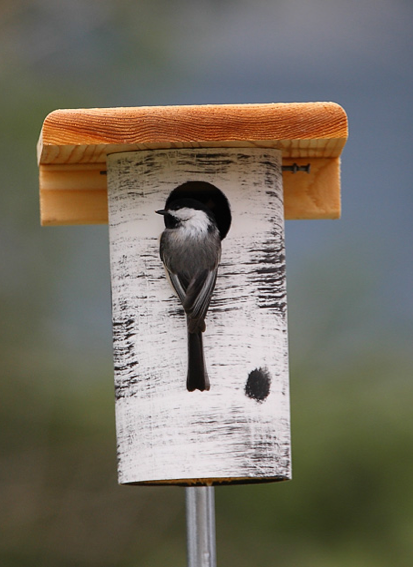Project Chickadee
Associate Professor of Biology Megan Gall
Find out more on the Sensory Ecology lab website.


In the Gall lab we work on a variety of questions related to Animal Communication. At the Preserve we are studying auditory processing and communication in the Black-capped Chickadee (Poecile atriacapillus). We use potter traps to capture individuals and apply a unique combination of color bands that allow us to identify individuals in the field. With this banded population we can determine how different individuals produce vocalizations (using field recordings), the relative dominance of the individual to other individuals (using videos and field observations), and how individuals respond to different vocalizations (using playback studies). We also bring individuals into the lab where we can test their hearing, before releasing them the next day at the site where we captured them. These data will ultimately allow us to understand the relationships among hearing abilities, vocal behavior and social behavior.
Recent field work has examined the biological mechanism behind decreased response to signals of predation when in the presence of anthropogenic noise. Across 14 sites and over 50 trials on the Preserve, chickadees and their flockmates – tufted titmice and white-breasted nuthatches – were exposed to playbacks of prerecorded local road noise and/or a taxidermy mount of a high-threat predator, the northern saw-whet owl. Their behavior was observed and their mobbing calls were annotated by lab students in order to determine the response under each condition. The results indicate that chickadees may be distracted from the predator by the noise and that nuthatches’ calls may be physically masked by the noise, rendering them unheard altogether. This research is among the first to examine and find support for both of these mechanisms as potential factors, therefore suggesting that more work must be done in a variety of taxa and under more variable noise conditions.